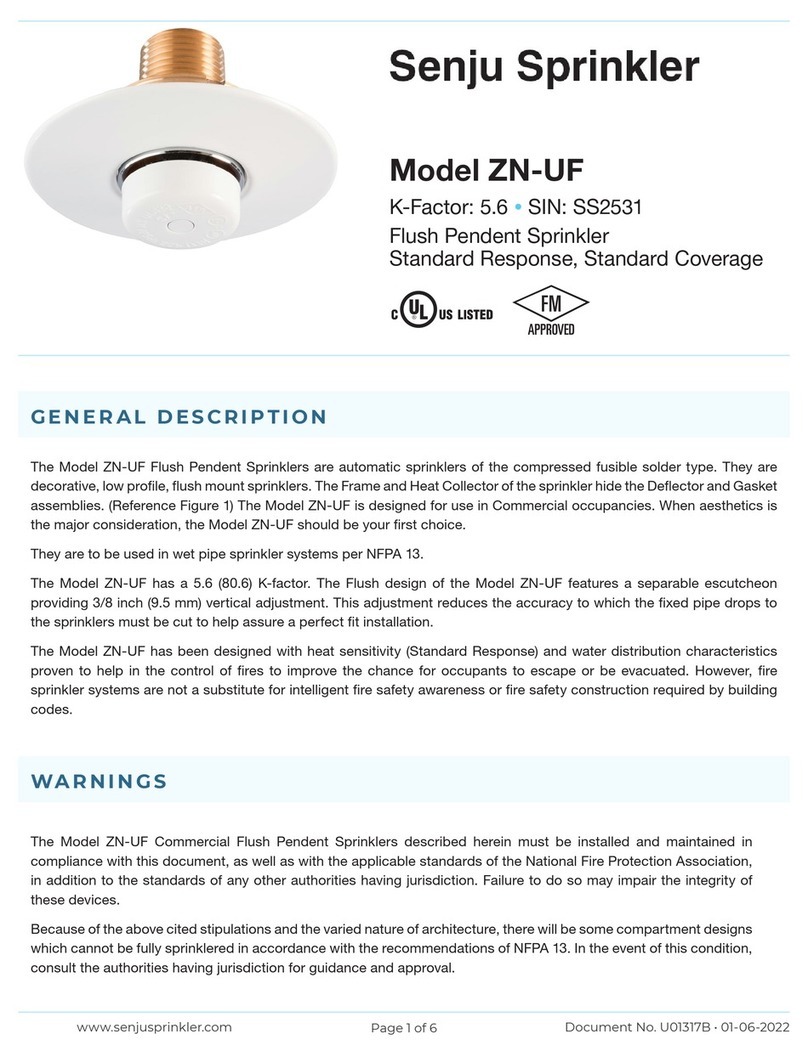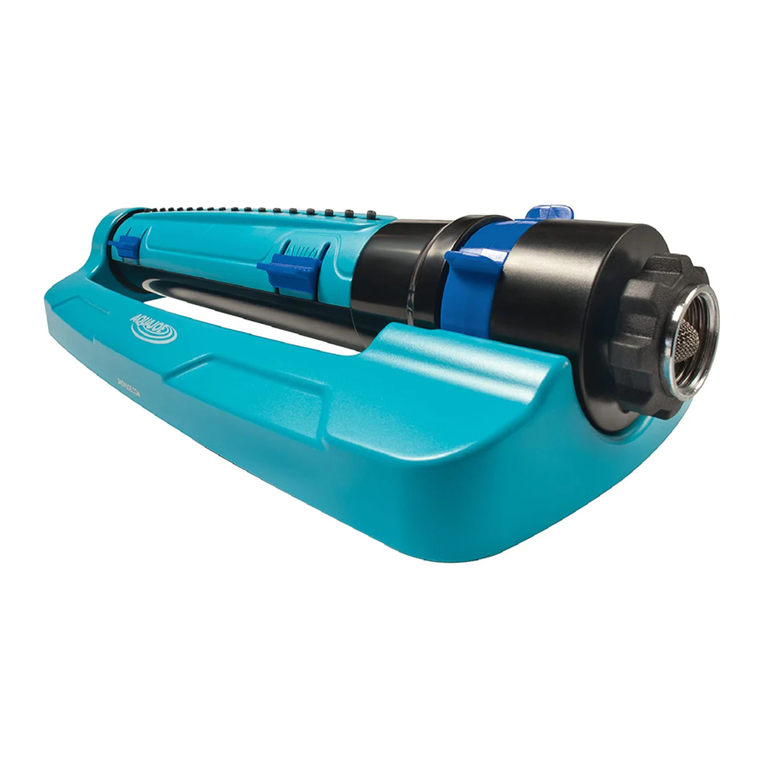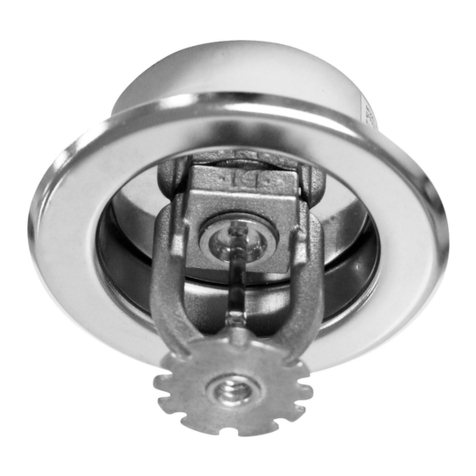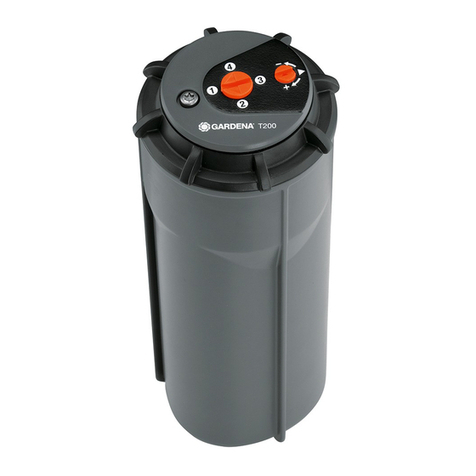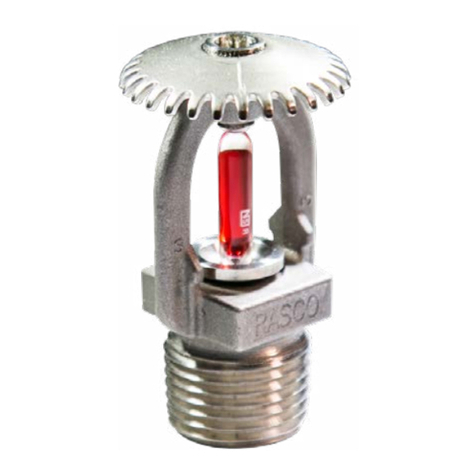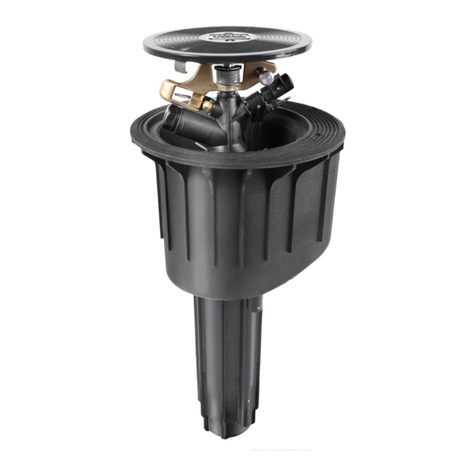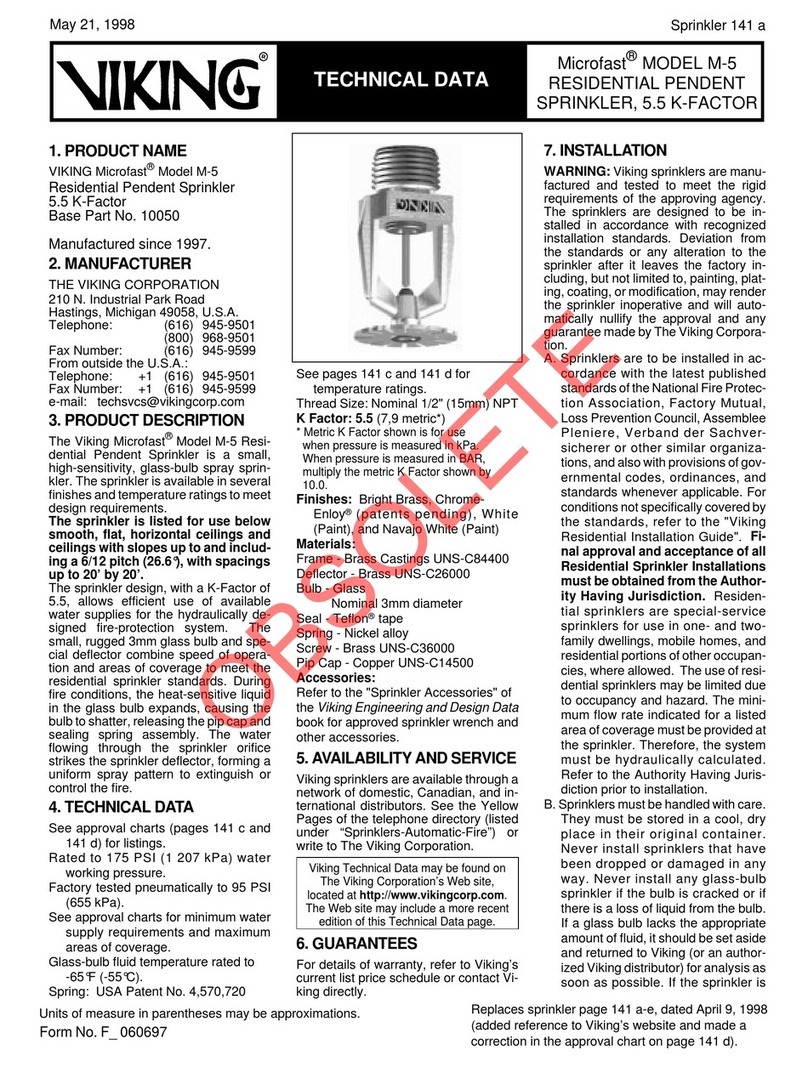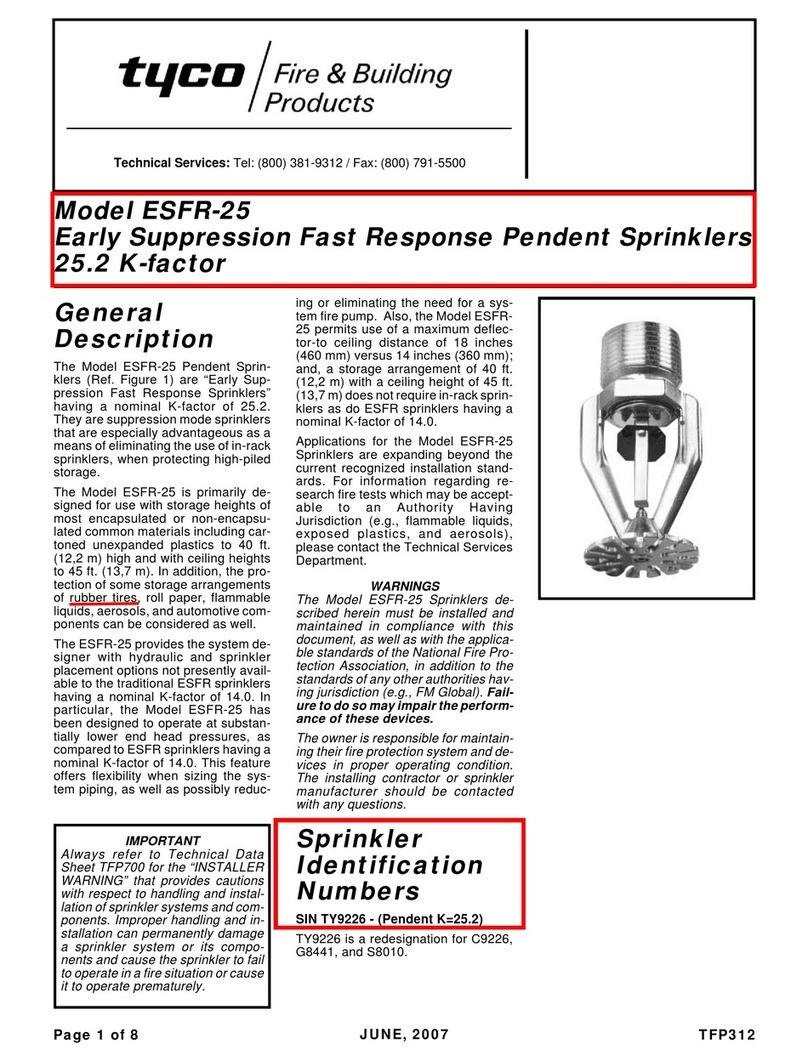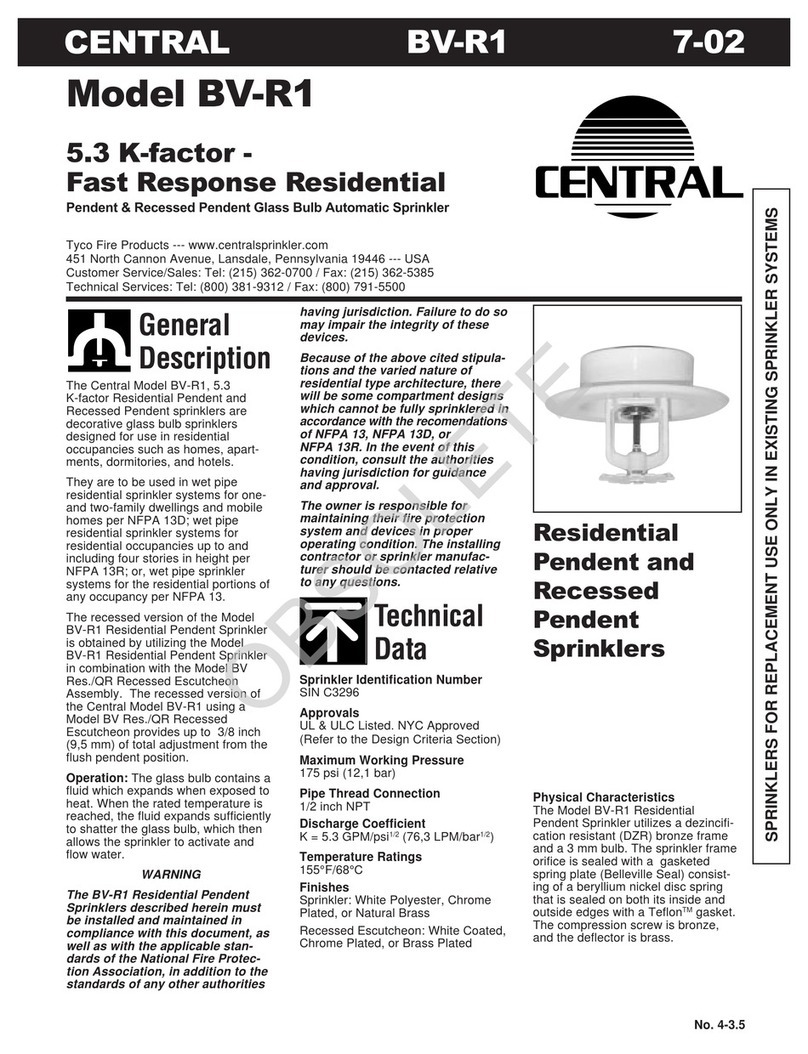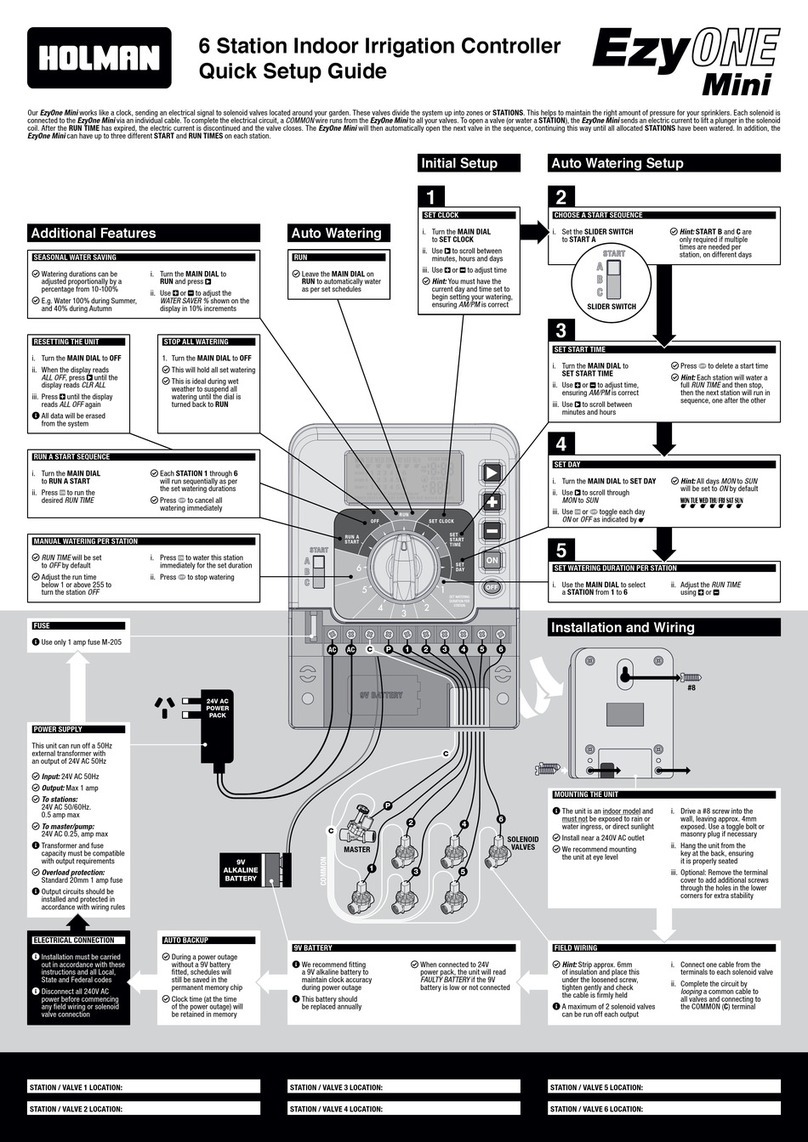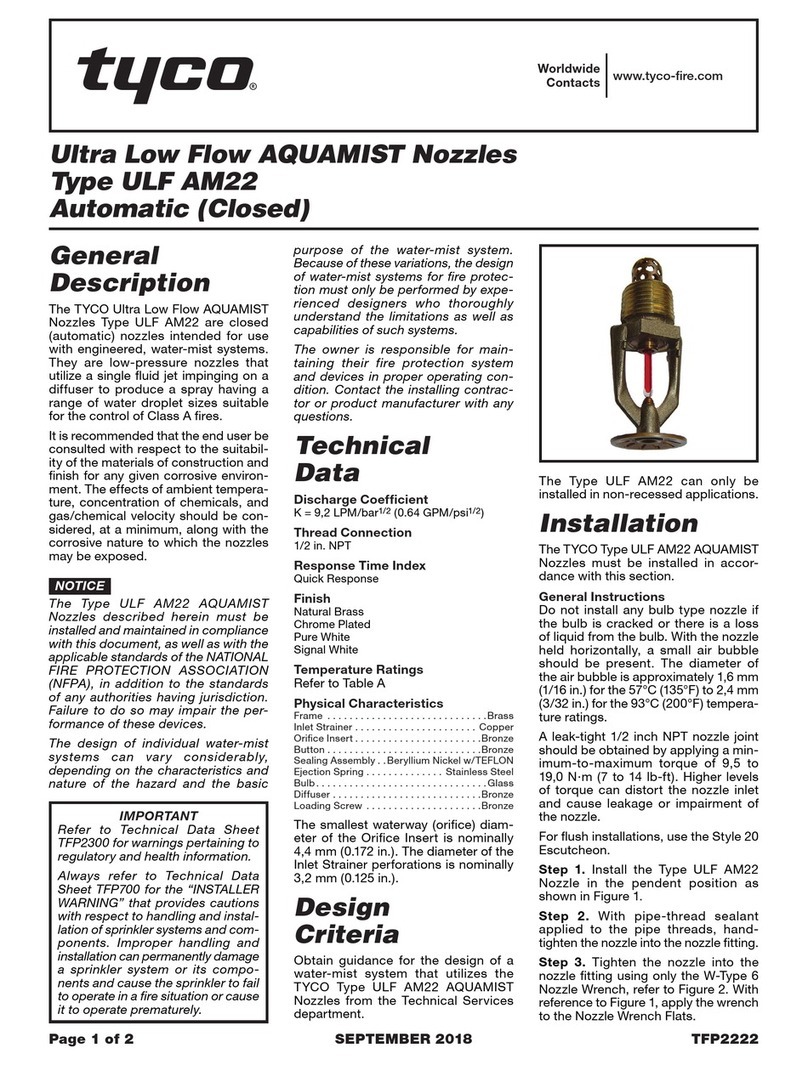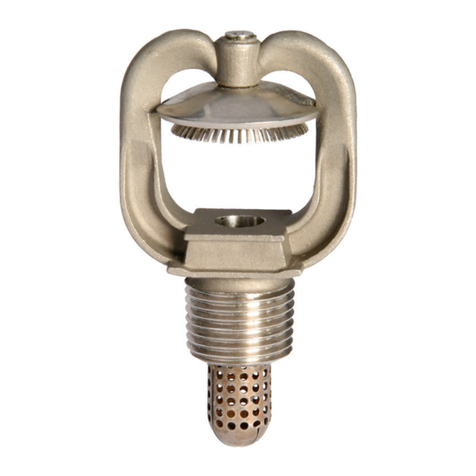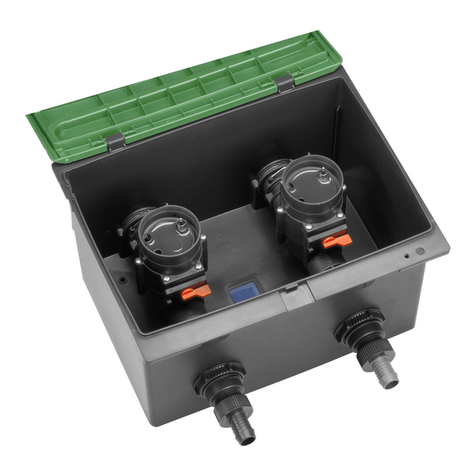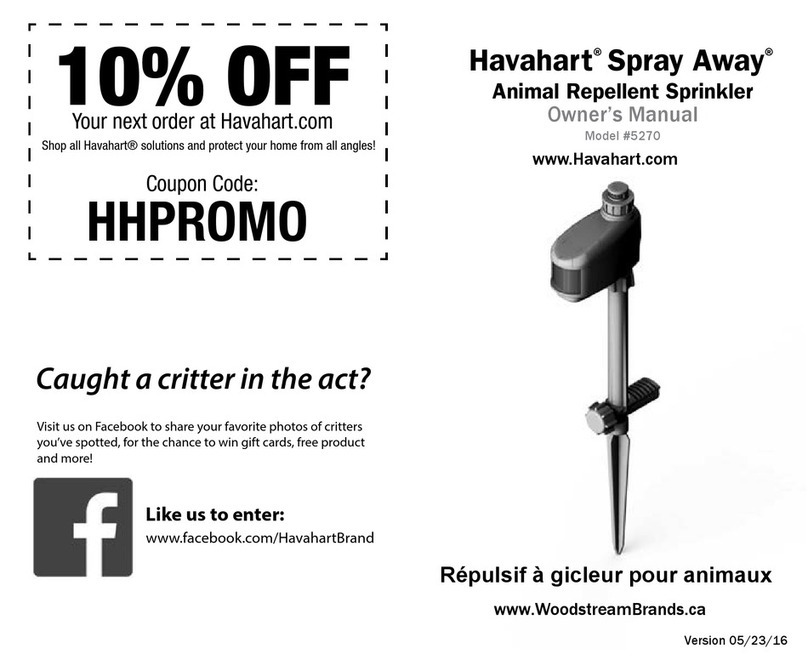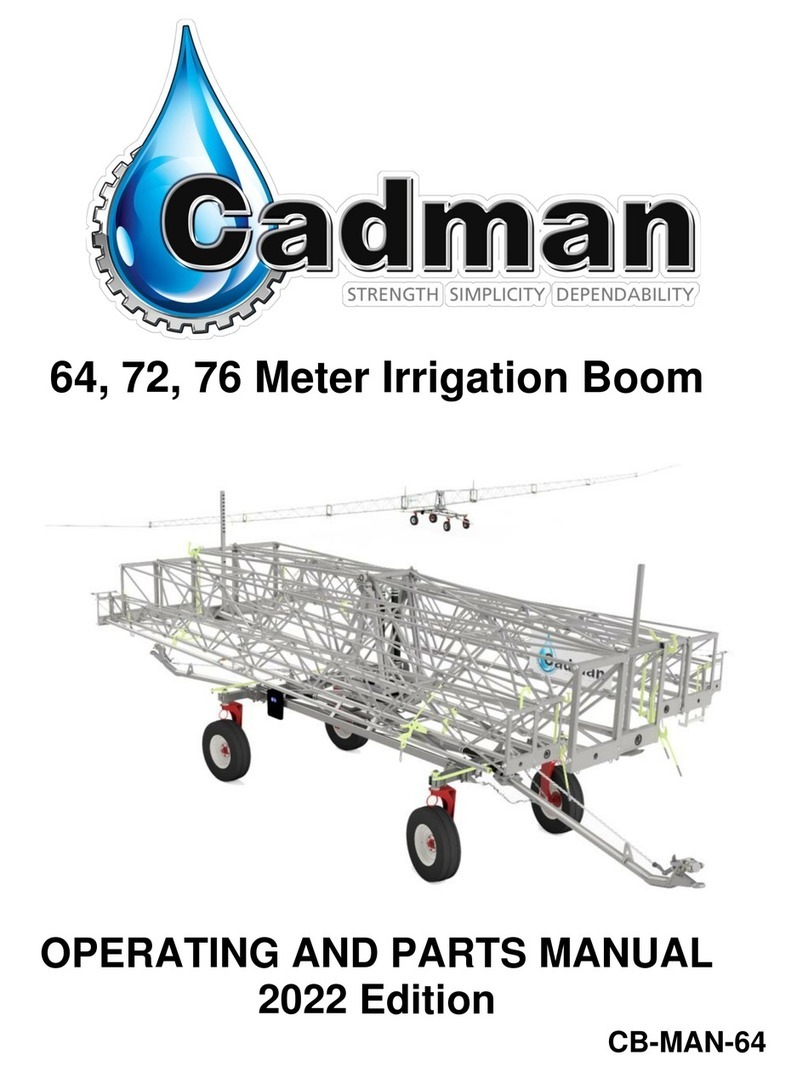Senju Sprinkler RC-QR-EC User manual

Page
:
1 of 7
Document No.U037922
Date
:
Jun/17/2014
Commercial Flat Concealed Sprinkler, Pendent,
Quick Response, Extended Coverage (Light Hazard)
Model: RC-QR-EC, K-Factor: 5.6, SIN: SS3561
GENERAL DESCRIPTION
The Model RC-QR-EC Commercial Flat Concealed Sprinklers are automatic sprinklers of the compressed fusible solder type,
extended coverage, for use Light Hazard Occupancies. These are decorative and quick response. The Cover Plate Assembly
hides the Deflector, Heat Responsive Element etc., which is in turn concealed above the ceiling. The cover plate has a flat profile,
and its diameter is extremely small (2-5/8 inch, 68mm). The push-on and/or thread-on, thread-off design of the concealed cover
plate assembly allows easy installation of the cover plate. Therefore, the Model RC-QR-EC should be your first choice when
aesthetics is the major consideration for ultimate appeal and unbeatable performance is desired.
They are to be used in wet pipe sprinkler systems per NFPA 13.
The Model RC-QR-EC has a 5.6 (80.6 LPM/bar1/2) K-factor.
For extended installation flexibility, the Model RC-QR-EC provides 1/2 inch (12.8mm) vertical adjustment. This adjustment in
installation decreases the need for precise cutting of the pipe that drops to the sprinkler and allows for a perfect fit with a range of
pipe lengths.
The heat sensitivity and water distribution design of Model RC-QR-EC allows for an increased chance of occupants’ escape or
evacuation in case of fire. However, fire sprinkler systems are not a substitute for fire safety awareness or fire safety construction
required by building codes.
WARNINGS
The Model RC-QR-EC must be installed and maintained in accordance with the rules stated herein as well as in
compliance with the applicable standards of the National Fire Protection Association regulations and the standards of
any other authorities having jurisdiction.
In the event of this condition, consult the authorities having jurisdiction for guidance and approval.
Failure to do so may impair the integrity of these devices.
It is the responsibility of the installing contractor to provide a copy of this document to the owner or his representative,
and in turn, it is the obligation of the owner to provide a copy of this document to a succeeding owner. The owner is
responsible for maintaining their fire protection system and devices in proper operating condition. The installing
contractor or sprinkler manufacturer should be contacted with any related questions.

Page
:
2 of 7
Document No.U037922
Date
:
Jun/17/2014
TECHNICAL DATA
Approvals:
cULus Listed
Sprinkler Identification Number (SIN): SS3561
Maximum Working Pressure: 175psi (12.1bar)
Discharge Coefficient (Nominal K-Factor):
K=5.6 GPM/psi1/2 (80.6 LPM/bar1/2)
Temperature Rating: 162℉ / 72℃Sprinkler
140℉ / 60℃Cover Plate
Vertical Adjustment: 1/2 inch (12.8 mm)
Cover Plate Finishes:
Standard Finishes-
White, Ivory, Beige, Brown, Black, Nickel,
Wood Grain
Custom Finishes-
Custom color and custom pattern cover plates
are available on special order. Contact Senju
Sprinkler representative with any custom
orders.
Please see chart on Page 7 for more detail.
Physical Characteristics: Ref. Figure 1
OPERATION
In case of fire, the solder component that holds together the Cover Plate and the Retainer melts. Then, the Cover Plate is released
at once. As a result, the Deflector drops down to the intended position. Two Heat Collectors are exposed to fire, and when
sufficient heat from the fire is recorded, internal components of the sprinkler to fall apart. This leads to allow the water flow to be
distributed on the affected by fire area. (Ref. Figure 2)
FIGURE 2. OPERATION PROCESS
(
The figure is for illustrative purpose only
)
DESIGN CRITERIA
The Model RC-QR-EC sprinklers are listed by UL and C-UL as quick response / extended coverage for use in Light Hazard
Occupancies with the Hydraulic Design Criteria in Table A. When it is installed, please use the newest NFPA 13 for extended
coverage requirements. The herein stated rules for use and installation of the Model RC-QR-EC are provided by the
manufacturer and must be strictly implemented for safe and full results.
FIGURE 1. Model RC-QR-EC K=5.6
2- 58"square(□68mm)
3- 14"(φ83mm)
2- 116"(φ52mm)
2- 58"(φ68mm)

Page
:
3 of 7
Document No.U037922
Date
:
Jun/17/2014
TABLE A. HYDRAULIC DESIGN CRITERIA
MAXIMUM COVERAGE AREA
ft.×ft. (m×m) WATER FLOW (MINIMUM) WATER PRESSURE (MINIMUM)
16×16 (4.9×4.9) 26 GPM (98.4 LPM) 21.6 psi (1.49 bar)
18×18 (5.5×5.5) 33 GPM (124.9 LPM) 34.7 psi (2.39 bar)
20×20 (6.1×6.1) 40 GPM (151.4 LPM) 51.0 psi (3.52 bar)
NOTES
Fire Sprinkler Systems should only be designed and installed by individuals who are completely familiar with automatic
sprinkler system design, installation procedures, and techniques.
Several criteria may apply to the installation and usage of each sprinkler. Consequently, it is recommended that the
sprinkler system designer review and develop a working understanding of the complete list of criteria prior to initiating
the design of the sprinkler system.
Questions concerning sprinkler installation and usage criteria, which are not coverage by the following instructions,
should be submitted to Contact Company. Include sketches and technical details as appropriate.
In some instances, the requirements of this document may concern specifications which are more stringent and which
take precedence over those specified in NFPA 13 or by the authority having jurisdiction.
The Model RC-QR-EC must not be used in applications where the air pressure above the ceiling is greater than that
below.
The spray from the sprinkler is distributed radically outward and downward from the sprinkler deflector. Consequently,
the sprinklers must be located such that there will be no blind spaces shielded from spray by partitions, room dividers,
overhangs or other parts of the dwelling structure.
The number of sprinklers within each compartment (as defined by NFPA 13) must be kept as small as possible. Do NOT
use more sprinklers than necessary to cover a particular space.
Use only the Cover Plate provided with the Model RC-QR-EC. The sprinkler must be secured in place by firmly fastening
the sprinkler system piping to the structure. If the sprinkler is not properly secured in position, reaction forces resulting
from sprinkler operation could alter its orientation and its water distribution pattern.
Obstruction to Water Distribution
Locations of sprinklers must follow the obstruction rules of NFPA 13.
General Service Conditions
The Model RC-QR-EC must only be utilized in WET PIPE sprinkler systems per NFPA 13.
Operational Sensitivity Criteria
For proper operational sensitivity, the Model RC-QR-EC must be installed beneath a solid ceiling having a smooth or textured
surface.
Heat Source Criteria
Refer to NFPA 13 for the requirements relating to the prevention of possible activation of the Heat Responsive Element of
Model RC-QR-EC, due to exposure to a heat sources other than an actual fire.
Precautionary Warnings for Corrosive Environments
The Model RC-QR-EC should not be installed where they may be subjected to a corrosive environment including the following:
(1) Chlorine ion and Chloride environment.
Stress corrosion cracking may be caused by exposure to environments with Chlorine ion and Chloride. Exposure to this
environment may result in sprinklers operating under Non-Fire conditions or Not Operating when exposed to an actual fire.
(2) Sprinkler system piping with Copper.
Sprinkler systems should be constructed in compliance with the applicable standards and the requirements for the copper
piping when copper piping is used in the sprinkler system. (Reference standards NFPA 13, ASTM B813, B828, and CDA
(Copper Development Association) – Solder Joint)

Page
:
4 of 7
Document No.U037922
Date
:
Jun/17/2014
All residual flux must be removed from the interior and exterior of copper piping by thoroughly flushing before installation of
the Sprinkler Heads. Otherwise, residues of flux may cause corrosion and leakage in the sprinkler system.
INSTALLATION
The Model RC-QR-EC must be installed in accordance with the following instructions.
NOTES
Do not use any sprinklers which have been subjected to potential mechanical damage. Do not use any sprinklers which
show deformation or cracking in either the Sprinkler or the Protective Cap.
Prior to installation, sprinklers should be maintained in the original cartons and packaging until used to minimize the
potential for damage to sprinklers that would cause improper operation or non-operation.
The Protective Cap must remain on the sprinkler during installation and until the ceiling installation is completed. The
Protective Cap must be removed to place the sprinkler in service.
Use a torque of 7 to 14 ft.lbs (9.5 to 19.0Nm) to achieve a 1/2 inch NPT sprinkler joint. A maximum of 21 ft.lbs. (28.5 Nm) of
torque is to be used to install sprinklers. If you exceed the recommended maximum torque, this could result in damage
to the sprinkler inlet, which may lead to leakage from the sprinkler.
In case of insufficient adjustment in Cover Plate installation, do not try to overly tighten, screw the sprinkler too loosely
or make any modification to the cover plate assembly. Readjust the sprinkler fitting for a better fit.
Installing Procedure
Step 1
The installation requirements for the sprinkler are as follows: to be installed only in the pendent position with the waterway
perpendicular to the ceiling. Install the sprinkler fitting so that the distance from the face of the fitting to the mounting surface will
be nominally 2 inch (50.8mm) as shown in Figure 3.
Step 2
With pipe thread sealant applied to the threads, hand tighten the sprinkler into the sprinkler fitting. Then tighten it with the
Sprinkler Socket or Wrench & Socket Combination (Ref. Figure 4). The grooves of the Socket must fit perfectly with the grooves
on the Sprinkler for proper installation (Ref. Figure 4).
Step 3
If desired the Protective Cap may also be used to locate the center of the clearance hole by gently pushing the ceiling material
against the center point of the Protective Cap. Before the installation of the ceiling, the sprinkler installation can be started with
the 2-3/8 inch (60mm) diameter clearance hole (Ref. Figure 3). Use the “Tolerance Limit of Ceiling Level” indicator on the
Protective Cap to check for proper installation height (Ref. Figure 3).
Step 4
Use the Cap Remover RC Tool to remove the Protective Cap (Ref. Figure 5), and then push or screw a Cover Plate Assembly
on the Cup of the Sprinkler by hand until its flange just comes in contact with the ceiling (Ref. Figure 6 and Figure 7). Stop
tightening the Cover Plate Assembly once the flange has come in contact with the ceiling. If the ceiling has been lifted from its
normal position in the process of tightening of the Cover Plate Assembly, readjust the cover plate assembly as necessary. If
the flange of the Cover Plate Assembly cannot come in contact with the ceiling sufficiently, readjust the sprinkler fitting as
necessary. When properly installed, there is a nominal 1/16 inch (1.6mm) air gap between the lip of the Cover Plate and the
ceiling, as shown in Figure 6

Page
:
5 of 7
Document No.U037922
Date
:
Jun/17/2014
FIGURE 3. INSTALLATION
FIGURE 4
FIGURE 5. PROTECTIVE CAP REMOVAL
FIGURE 6
2- 38"(φ60mm)
Min. 18" (3.2mm)
Ave. 14"(6.4mm)
2- 58" (φ68mm)
3- 14"(φ83mm)
2- 58" square (□68mm)

Page
:
6 of 7
Document No.U037922
Date
:
Jun/17/2014
FIGURE 7. INSTALLATION (CORRECT OR INCORRECT)
CARE AND MAINTENANCE
The following instructions must be implemented for the maintenance and service of the Model RC-QR-EC.
NOTES
Wet pipe sprinkler systems must be maintained at a minimum temperature of 40°F
/
4°C to prevent freezing and bursting
of the pipe and/or sprinklers.
Automatic sprinklers are not to be tested with a heat source. Operation of the heat responsive element can result.
Absence of a Cover Plate Assembly may delay the response time of the sprinkler in case of fire.
Install the cover plate assembly properly, as shown in Figure 6. Improper installation of the cover plate assembly may
cause improper operation or non-operation.
If the ceiling is to be repainted after the installation of the Sprinkler, care must be exercised to ensure that the new paint
does not seal off any of the air gap.
Factory painted Cover Plates must not be repainted. They should be replaced, if necessary, by factory painted cover
plates. Non-factory applied paint may adversely delay or prevent sprinkler operation in case of a fire.
Do not pull the Cover Plate. Separation may result.
In preparation for maintenance of the fire protection system, permission to close the main control valve must be
obtained from the proper authorities and all affected by this action parties must be informed before the maintenance
session can commence.
Do NOT enclose any sprinklers within drapes, curtains, or valances.
Do NOT hang anything from the sprinklers.
Do NOT clean the sprinklers with soap and water, detergents, ammonia, cleaning fluids, or other chemicals. Remove
dust, lint, cobwebs, cocoons, insects, and larvae by gently brushing with a feather duster or gently vacuuming with a
soft bristle (i.e., dusting) brush attachment.
Exercise suitable safety precautions in the use and storage of highly flammable materials. The rapid rate of fire
development and spread of these materials can reduce the ability of the sprinkler systems to aid in the control of a fire
involving such hazards.
Leaking or corroded sprinklers must be replaced.
Automatic Sprinklers must never be shipped or stored where the temperature exceeds 100°F
/
38°C.
Automatic sprinkler must never be physically altered, such as painted, plated, or coated, once shipped from the factory. If the
sprinklers have been in any way modified, they must be replaced.
Great caution must be applied to prevent damage to the sprinklers at all stages - before, during, and after installation. Damaged
units, as a result of dropping, hitting, over-tightening, or wrench slippage, must be replaced.
When remodeling, such as by adding false beams or light fixtures or changing the location of compartment walls, first verity that
the new construction will not violate the installation requirements of the applicable standards of NFPA. Alter the new construction
and/or the sprinkler system to suit the requirements of this document and the applicable NFPA regulations.

Page
:
7 of 7
Document No.U037922
Date
:
Jun/17/2014
The owner is responsible for the maintenance of the sprinkler system, including inspection and testing, its compliance with this
documents, as well as the standards of the National Fire Protection Association (e.g., NFPA 25), and the regulations of any other
authorities having jurisdiction. The owner should direct any questions regarding the above rules and regulations to the installing
contractors or the sprinkler manufacturer. It is recommended that automatic sprinkler systems be inspected, tested, and
maintained by a qualified Inspection Service in accordance with NFPA 25.
ORDER PROCEDURE
When placing an order, please contact a local distributor with the following information (Model Name, Specify, Temp. and Finish).
Sprinkler:
Model: RC-QR-EC (SS3561, Quick Response, Extended Coverage, Flat Concealed Sprinkler, Pendent, K5.6)
Cover Plate Assembly:
2-5/8 inch (φ68mm) or 3-1/4 inch (φ83mm) or 2-5/8 inch square (□68mm), Order Separately from Sprinkler
Please refer to the chart below for available sizes and finishes.
Standard Finishes Custom Finishes
White Ivory Beige Brown Black Nickel Wood Grain Custom Color Custom Pattern
2-5/8" Round, 140ºF ○ ○ - - - ○ - ○ ○
3-1/4" Round, 140ºF ○ ○ ○ ○ ○ ○ ○ ○ ○
2-5/8" Square, 140ºF ○ - - - - - - ○ ○
Tools for Installation of Model: RC-QR-EC
Socket for Model RC-QR-EC
Wrench & Socket for Model RC-QR-EC
Cap Remover RC
This manual suits for next models
1
Table of contents
Other Senju Sprinkler Irrigation System manuals
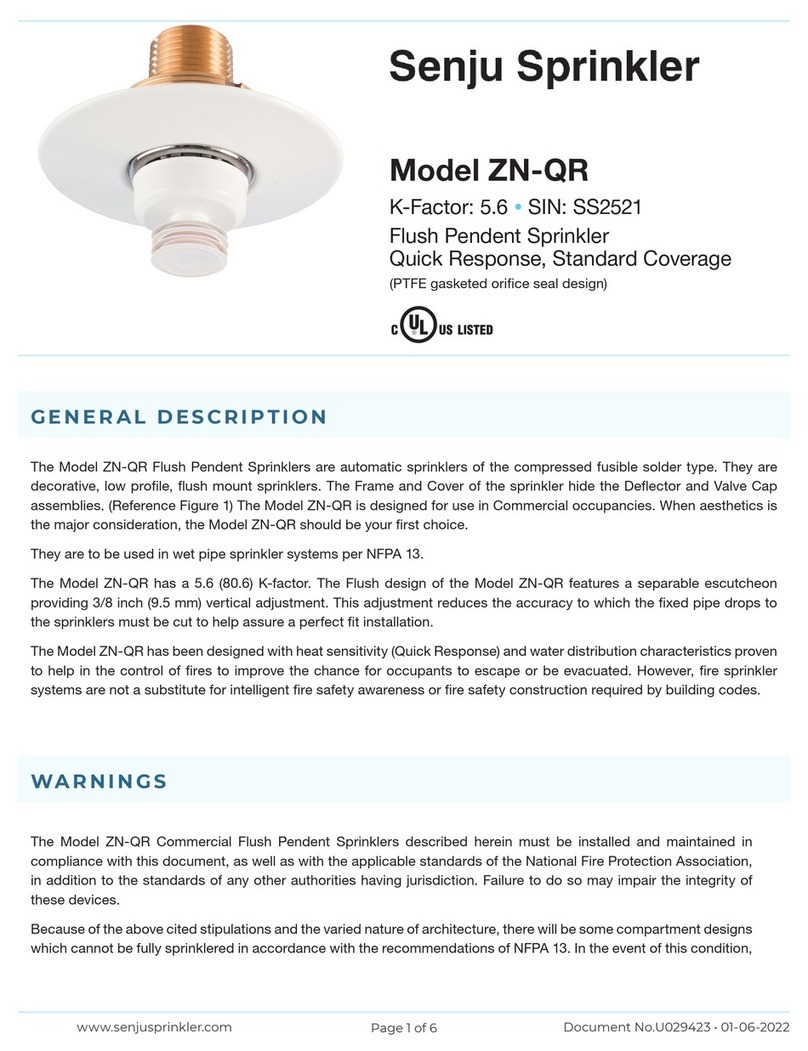
Senju Sprinkler
Senju Sprinkler ZN-QR User manual
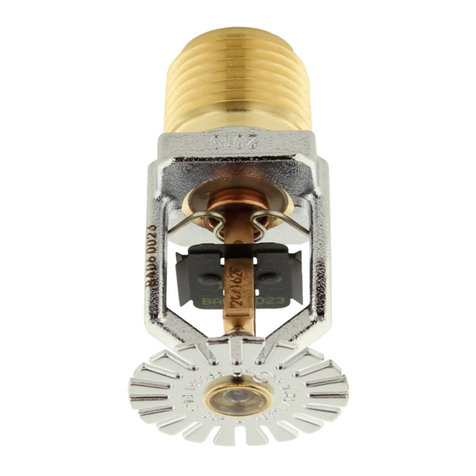
Senju Sprinkler
Senju Sprinkler HF-RES User manual

Senju Sprinkler
Senju Sprinkler CN-QR User manual

Senju Sprinkler
Senju Sprinkler RC-RES User manual
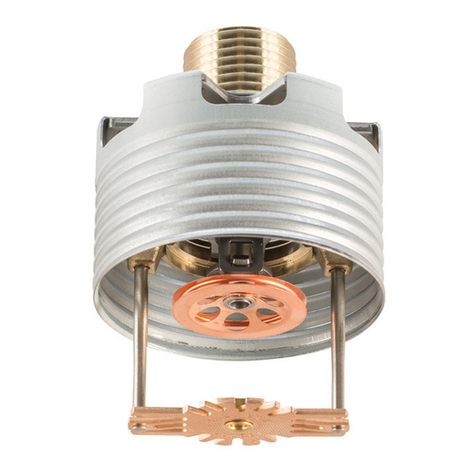
Senju Sprinkler
Senju Sprinkler RC-QR User manual

Senju Sprinkler
Senju Sprinkler RC-QR User manual

Senju Sprinkler
Senju Sprinkler FR-RES User manual
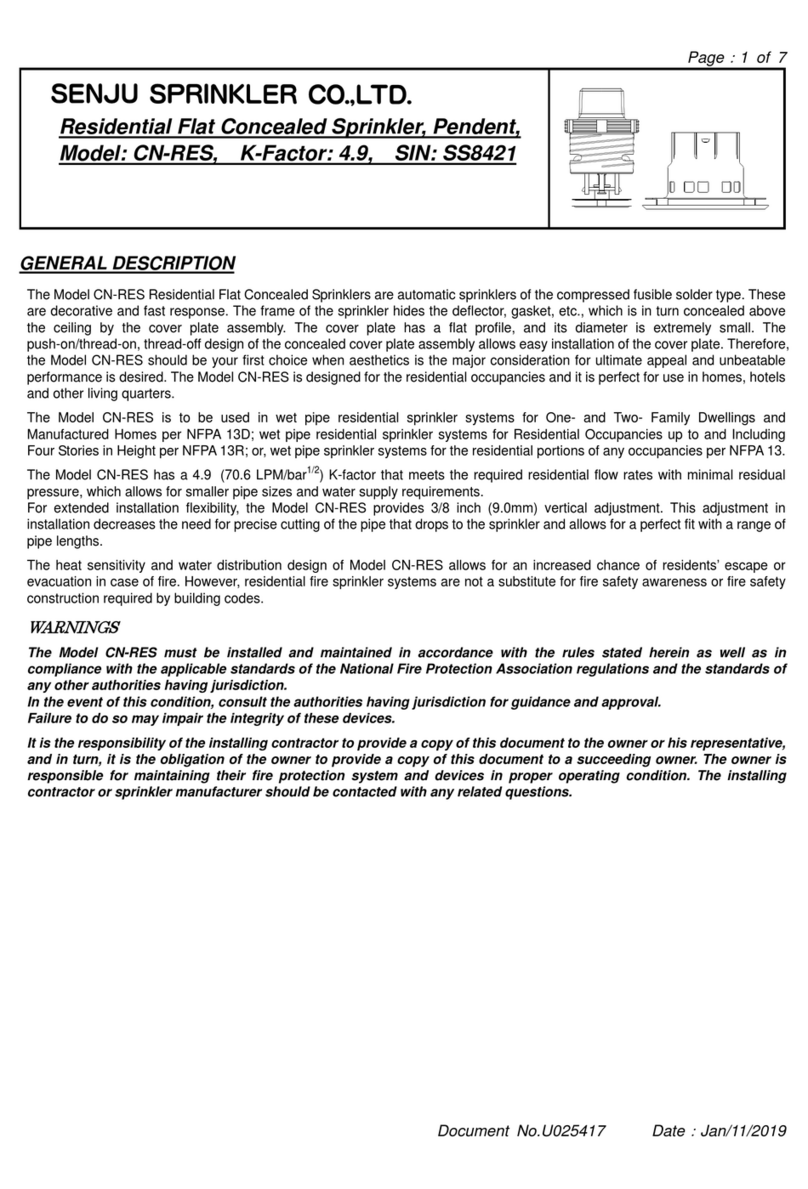
Senju Sprinkler
Senju Sprinkler CN-RES User manual

Senju Sprinkler
Senju Sprinkler FR-QR User manual
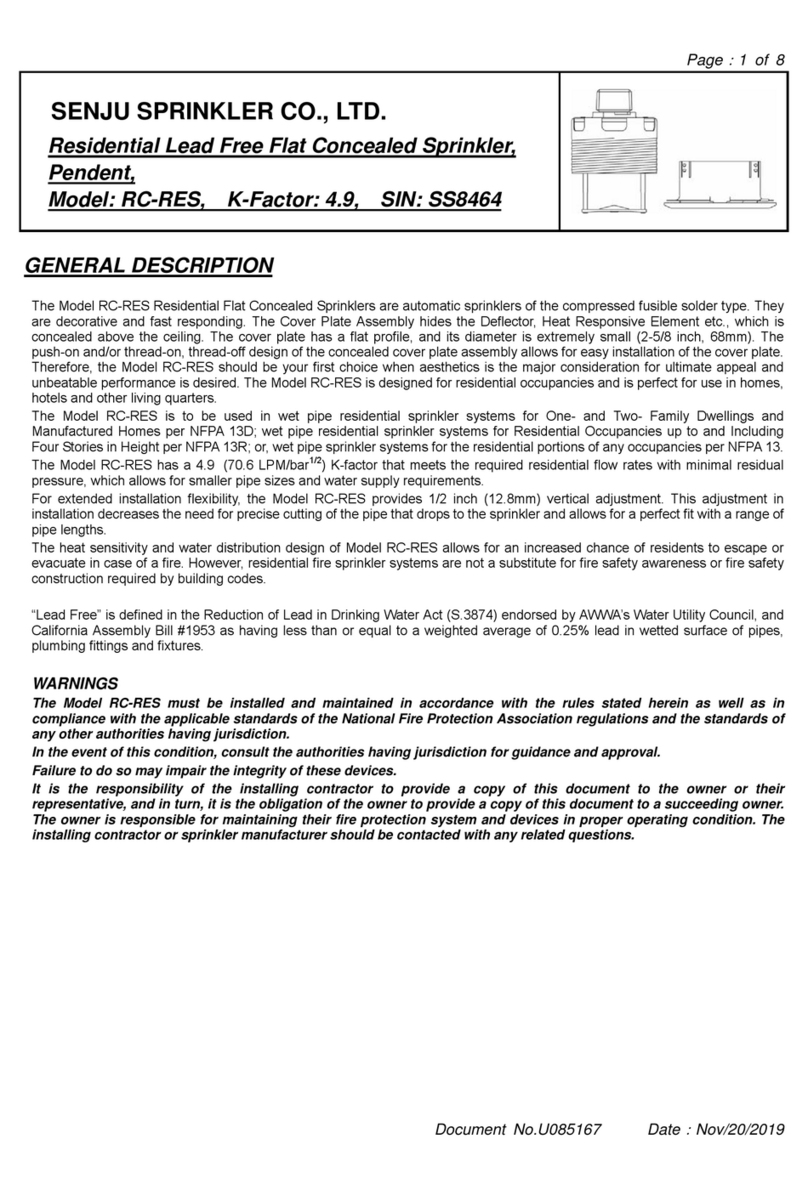
Senju Sprinkler
Senju Sprinkler SS8464 User manual


